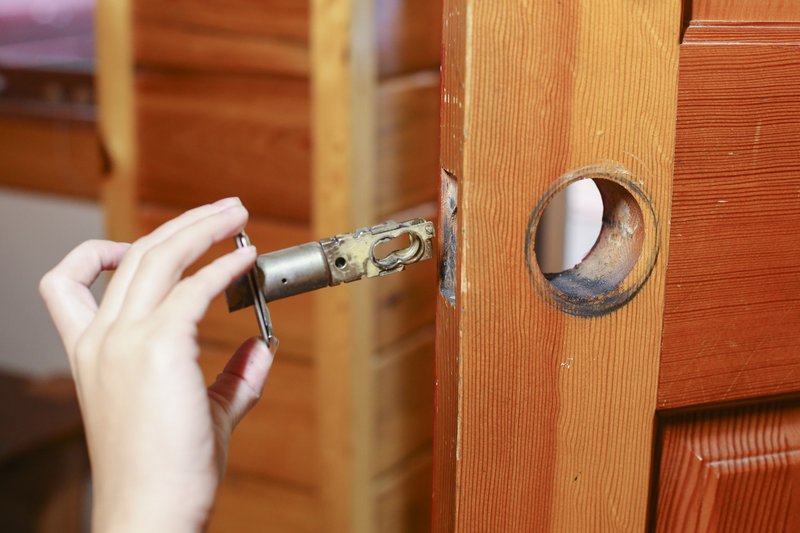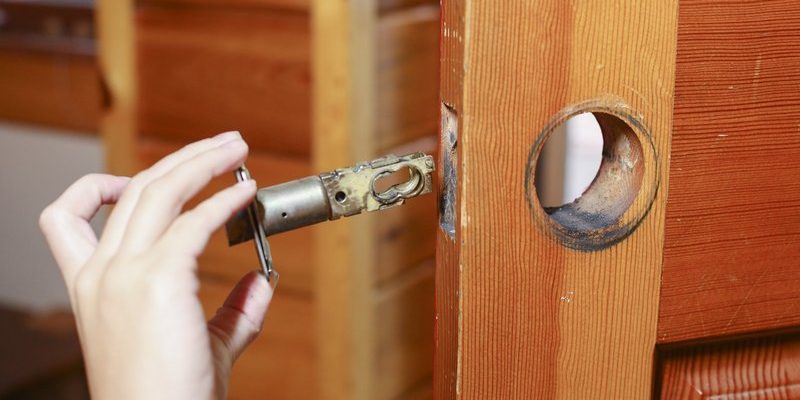
Repairing a damaged door latch isn’t as daunting as it might seem. With a little patience and the right approach, you can fix it yourself. Let’s dive into some easy steps to get that latch back to working order. Whether you have a traditional latch or a more modern one, understanding what to do can save you time and money.
Understanding How Door Latches Work
A door latch is more than just a simple mechanism; it’s the unsung hero of your home security and privacy. In most cases, door latches rely on a few components: the latch bolt, strike plate, and the handle. When you close a door, the latch bolt extends into the strike plate, keeping your door securely shut.
But when you forcefully slam a door, the latch can get misaligned or even bent. This misalignment prevents it from fitting snugly into the strike plate. Have you noticed how sometimes the latch sticks or catches on the frame? That’s usually a sign something’s not right. Understanding these parts can help you troubleshoot the problem effectively.
Assessing the Damage
Before grabbing tools, take a moment to assess the damage. Is the latch bent, or is it just misaligned? Sometimes, a simple readjustment can do the trick. Here’s how to evaluate the situation:
- Visual Inspection: Look closely at the latch and strike plate. Are there any visible dents, scratches, or bending?
- Check Alignment: Close the door gently and observe if the latch lines up properly with the strike plate.
- Test the Mechanism: Try operating the latch several times. Does it move smoothly, or is it catching?
If you find the latch is simply misaligned, you might only need to make some adjustments. But if it’s bent or damaged, you may need to replace it altogether.
Tools You’ll Need for the Repair
Having the right tools handy can make any repair smoother. Here’s a quick list of what you’ll need:
- Screwdriver: A Phillips or flathead, depending on the screws.
- Adjustable Wrench: For tightening or loosening any nuts.
- Pliers: Helpful for bending small parts back into shape.
- Lubricant: A spray lubricant can help if the latch is sticking.
- Replacement Parts: If necessary, you may need to buy a new latch kit from your local hardware store.
Once you’ve gathered these tools, you’ll be well-prepared to tackle the repair without running back and forth for supplies.
Repairing a Misaligned Latch
If the latch is simply misaligned, you’ll be pleased to learn that this is a relatively easy fix. Here’s what to do:
1. Loosen the Screws: Start by using your screwdriver to loosen the screws holding the latch in place. You don’t have to remove them entirely; just loosen enough to allow for slight movement.
2. Adjust the Position: Gently wiggle the latch until it aligns with the strike plate. You want the latch to sit flush when the door is closed.
3. Tighten the Screws: Once aligned, retighten the screws securely. Check the door to ensure it closes smoothly.
If you’ve adjusted it correctly, the door should latch without resistance.
Dealing with a Bent Latch
Sometimes, a bent latch requires a bit of finesse to repair. Here’s how to handle it:
1. Remove the Latch: Using your screwdriver, take out the screws and carefully remove the latch from the door.
2. Assess the Bend: Look closely at the latch to identify the area of bending. It’s usually a simple curve that can be straightened.
3. Bend it Back: Using pliers, gently work to bend the latch back into its original shape. Be careful not to apply too much force, as you don’t want to snap it.
4. Reinstall the Latch: Once straightened, reinstall the latch and test it to ensure it functions properly.
By taking your time, you can usually get the latch back to working order without needing a replacement.
Replacing the Latch
If your latch is too damaged to repair, don’t worry—replacing it is straightforward. Here’s what you need to do:
1. Remove the Old Latch: Unscrew the latch from the door and the strike plate. Keep track of any screws, as they may be needed for the new latch.
2. Choose the Right Replacement: Head to your local hardware store and find a latch that matches your door’s specifications. Make sure it’s compatible with the existing strike plate, or grab a new one if necessary.
3. Install the New Latch: Follow the instructions that come with your new latch. Generally, you’ll place it in the same spot as the old one and secure it with screws.
4. Test It Out: Once installed, give the door a good close to ensure the latch engages smoothly.
Replacing a latch can feel like a big task, but it’s manageable with a little effort and the right components.
Maintaining Your Door Latch
After you’ve repaired or replaced your door latch, think about how to keep it in good condition. Regular maintenance can save you from future headaches. Here are some easy tips:
- Clean Regularly: Dust and debris can build up around the latch, so clean it periodically to maintain smooth operation.
- Lubricate the Mechanism: A little spray lubricant can go a long way in keeping things moving freely.
- Check Alignment: After slamming a door or moving furniture, take a moment to ensure everything remains aligned.
With a few minutes of upkeep now and then, your latch can run smoothly for years to come.
Closing Thoughts
Repairing a door latch damaged by forceful closing is definitely doable, even for beginners. By understanding how latches work, assessing the damage, and following the right steps, you can handle this task with confidence. Whether it involves making a simple adjustment or replacing the latch entirely, you now have the tools and knowledge to tackle the job.
Remember, the goal is to keep your door functioning properly while maintaining security and privacy in your home. So, the next time you inadvertently slam a door, rest assured that a simple fix is within your reach. Happy repairing!
